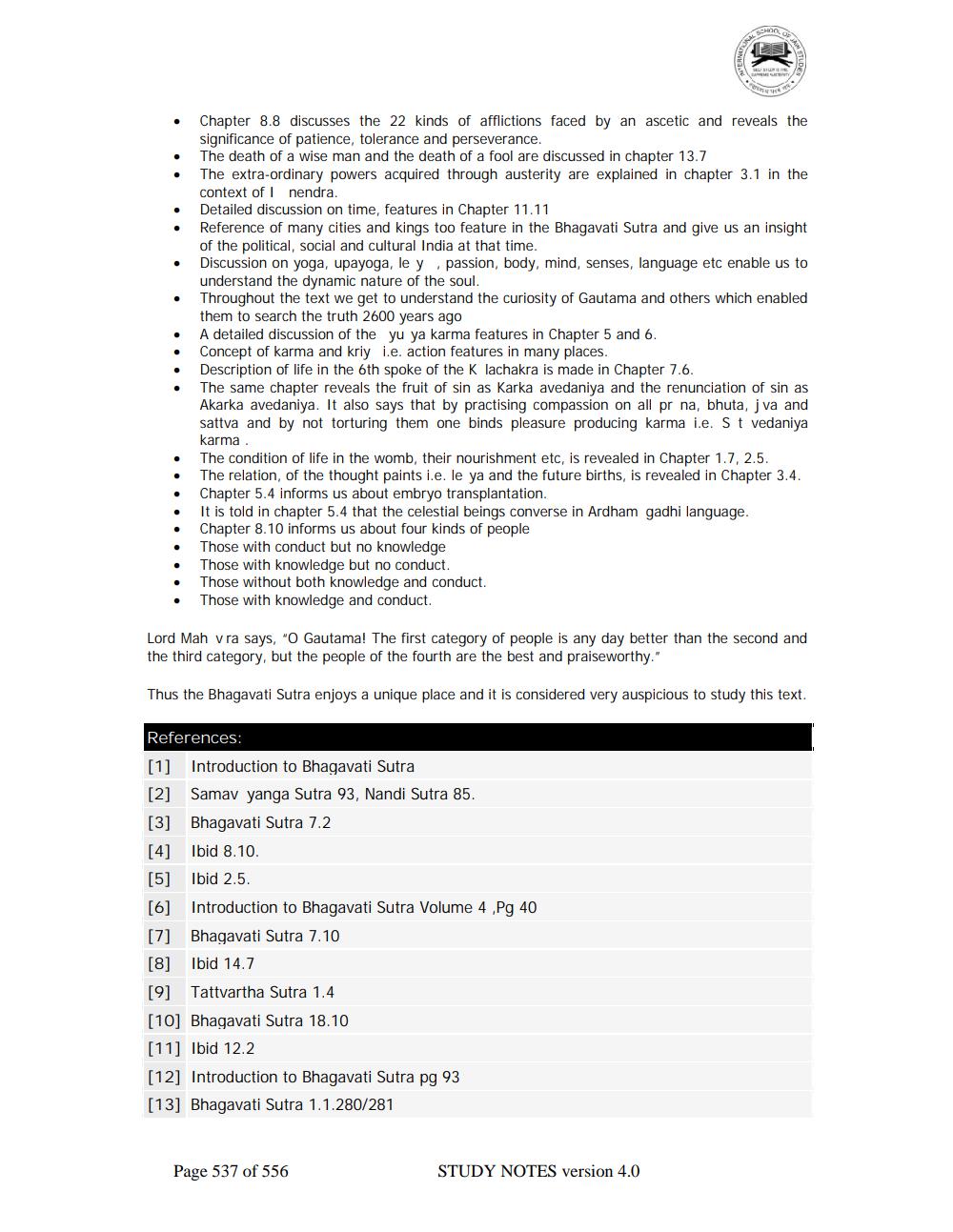________________
Chapter 8.8 discusses the 22 kinds of afflictions faced by an ascetic and reveals the significance of patience, tolerance and perseverance. The death of a wise man and the death of a fool are discussed in chapter 13.7 The extra-ordinary powers acquired through austerity are explained in chapter 3.1 in the context of l nendra. Detailed discussion on time, features in Chapter 11.11 Reference of many cities and kings too feature in the Bhagavati Sutra and give us an insight of the political, social and cultural India at that time. Discussion on yoga, upayoga, le y passion, body, mind, senses, language etc enable us to understand the dynamic nature of the soul. Throughout the text we get to understand the curiosity of Gautama and others which enabled them to search the truth 2600 years ago A detailed discussion of the yu ya karma features in Chapter 5 and 6. Concept of karma and kriy i.e. action features in many places. Description of life in the 6th spoke of the Klachakra is made in Chapter 7.6. The same chapter reveals the fruit of sin as Karka avedaniya and the renunciation of sin as Akarka avedaniya. It also says that by practising compassion on all pr na, bhuta, jva and sattva and by not torturing them one binds pleasure producing karma i.e. S t vedaniya karma The condition of life in the womb, their nourishment etc, is revealed in Chapter 1.7, 2.5. The relation, of the thought paints i.e. le ya and the future births, is revealed in Chapter 3.4. Chapter 5.4 informs us about embryo transplantation. It is told in chapter 5.4 that the celestial beings converse in Ardham gadhi language. Chapter 8.10 informs us about four kinds of people Those with conduct but no knowledge Those with knowledge but no conduct. Those without both knowledge and conduct. Those with knowledge and conduct.
•
Lord Mah vra says, "O Gautama! The first category of people is any day better than the second and the third category, but the people of the fourth are the best and praiseworthy."
Thus the Bhagavati Sutra enjoys a unique place and it is considered very auspicious to study this text.
References: [1] Introduction to Bhagavati Sutra [2] Samav yanga Sutra 93, Nandi Sutra 85. [3] Bhagavati Sutra 7.2 [4] Ibid 8.10. [5] Ibid 2.5. [6] Introduction to Bhagavati Sutra Volume 4,Pg 40 [7] Bhagavati Sutra 7.10 [8] Ibid 14.7 [9] Tattvartha Sutra 1.4 [10] Bhagavati Sutra 18.10 [11] Ibid 12.2 [12] Introduction to Bhagavati Sutra pg 93 [13] Bhagavati Sutra 1.1.280/281
Page 537 of 556
STUDY NOTES version 4.0




